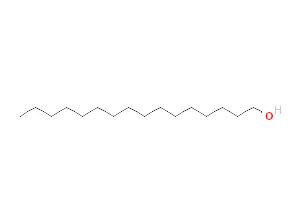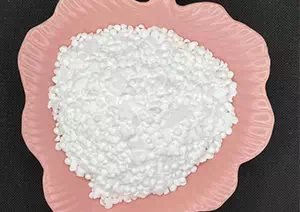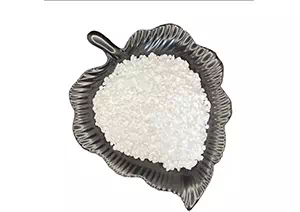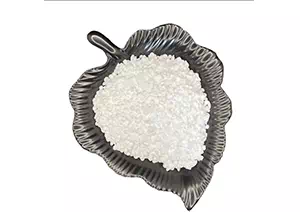1-Hexadecanol Information
Chemical Name | 1-Hexadecanol |
Other Name | Hexadecanol; Adol 52; Cetyl alcohol |
CAS | 36653-82-4 |
EINECS | 253-149-0 |
Type | Food additives; Flavourings; Organic Intermediates; Daily Chemicals; Organic raw materials |
Molecular Formula | C16H34O |
Molecular Weight | 242.44 |

What is 1-Hexadecanol?
Hexadecanol, this chemical compound, is odorless by itself. In the cosmetics industry, it is widely used as an important ingredient. Due to its excellent moisturizing properties, it is often added to various skin care products to help keep the skin moist and soft. In addition, hexadecol also serves as a foam stabilizer and plays a crucial role in many personal care products, ensuring that the products generate rich and stable foam during use.
In addition to its application in the cosmetics field, cetanol is also one of the key raw materials for manufacturing surfactants. Surfactants are a type of chemical substances that can reduce the surface tension or interfacial tension of liquids and are widely used in products such as detergents, emulsifiers, and dispersants. Meanwhile, hexadecanol also holds an indispensable position in the field of organic synthesis. It is an important intermediate for the synthesis of various organic compounds. In the process of drug manufacturing, cetanol also plays a significant role. It is a part of the molecular structure of certain drugs and has a crucial impact on the efficacy and stability of the drugs.
The production of agricultural chemicals also cannot do without hexadecol. As a raw material for certain pesticides and fertilizers, it helps to increase the yield and quality of crops. In the dye industry, hexadecanol is used as an additive to help dyes better penetrate into fibers, improving the dyeing effect and fastness.
Tracing back to the historical origin of hexadecol, it was initially extracted from the wax of cetaceans through a hydrolysis process. However, with the enhancement of awareness of wildlife protection and the popularization of the concept of sustainable development, modern industry has shifted to more environmentally friendly and sustainable production methods. Nowadays, in industry, cetanol is mainly produced by reducing crude oil or cetachloride with sodium borohydride. This method not only enhances production efficiency but also reduces the impact on the environment.
Generally, in industry, natural oil is used as raw material and a series of complex chemical reactions are carried out to prepare hexadecol. First of all, natural oils will undergo esterification reactions with alcohols to form corresponding ester compounds. Then, these ester compounds will be converted into mixed fatty alcohols under the condition of high-pressure hydrogenation. Finally, through separation techniques such as distillation, high-purity 1-hexadecanols can be purified from these mixed fatty alcohols.
It is reported that hexadecol is one of the main components of whale wax oil and exists in the form of whale wax palmitate. Cetacyl palmitate is an ester compound formed by the esterification reaction of cetacyl alcohol and palmitic acid. It is widely present in nature and has certain biological activities.
Furthermore, the research also found that hexadecol is not only present in whale wax oil. In daily life, we can find the presence of this substance in many foods. For example, guavas, peaches, pears, radishes, baked potatoes, mustard, Parmesan cheese, butter, milk powder, boiled eggs, cooked chicken, roast beef and other foods all contain trace amounts of hexadecol. It can even be detected in some beverages such as whisky and tea, as well as fruits such as star fruit, mango, rice, licorice, kiwi, loquat, chicory, etc. Traces of hexadecol can also be found in seafood such as shrimp, crab, clams, and plant-based foods like currants and papayas.

1-Hexadecanol Properties
Melting point | 48-50 °C (lit.) |
Boiling point | 179-181 °C/10 mmHg (lit.) |
density | 0.818 g/mL at 25 °C (lit.) |
vapor density | 8.34 (vs air) |
vapor pressure | <0.01 mm Hg ( 43 °C) |
refractive index | nD79 1.4283 |
Fp | 275 °F |
storage temp. | Store below +30°C. |
solubility | Soluble in alcohol, chloroform, ether |
form | Powder, Flakes or Pellets |
pka | 15.20±0.10(Predicted) |
color | White to off-white |
explosive limit | 8% |
Water Solubility | insoluble |
Stability: | Stable. Incompatible with strong oxidizing agents, strong acids. |

1-Hexadecanol Uses
1-hexadecanol, as an organic compound with multiple uses, its main application fields cover cleaning agents, surfactants, lubricants, pharmaceutical intermediates, fragrances, and raw materials for daily chemical products, among others. In the agricultural field, it is also used as an insulating material for rice to maintain its freshness and quality. In addition, 1-hexadecanol is also an important analytical chemical reagent, widely used in various chemical analyses and experiments. Meanwhile, it is also used as a stationary liquid in gas chromatography for the separation and analysis of complex mixtures.
According to the provisions of the national standard GB 2760-1996, 1-hexadecanol is one of the permitted flavorings, which further reflects its important position in the food and flavoring industry.
As a basic raw material of surfactants, 1-hexadecanol plays an indispensable role in the preparation process of cosmetics and other natural chemicals. Its unique chemical properties make it have broad application prospects in these fields.
Cetyl alcohol, namely 1-cetyl alcohol, is a multifunctional chemical component. It can be used as a emollient, emulsifier, thickener, adhesive, foam accelerator or lotion stabilizer, etc., depending on different formulas and requirements. This component is usually derived from coconut oil or palm oil, but it can also be obtained through artificial synthesis. It is worth noting that some authoritative sources consider it a non-acne material, which makes its application in skin care products more extensive and safe.
In the field of chemical synthesis, 1-hexadecanol is also used to prepare (±) -2-methoxyheptadecanoic acid (fatty acid), which is an important organic compound widely applied in scientific research and industrial production.
In recent years, with the rapid development of new energy technologies, a new type of organic phase change material - hexadecol high-chain fatty acid ester has been widely used in the field of heat storage. This material, with its excellent heat storage performance and stability, has become one of the important directions for the research and development of new heat storage technologies.
Finally, it should be pointed out that 1-hexadecol is also an important derivative of cetane (alkane), and it has also been found in the membrane components of certain specific microorganisms, such as Vibrio forvibrio M1. This further broadens our understanding and application scope of the organic compound 1-hexadecanol.





